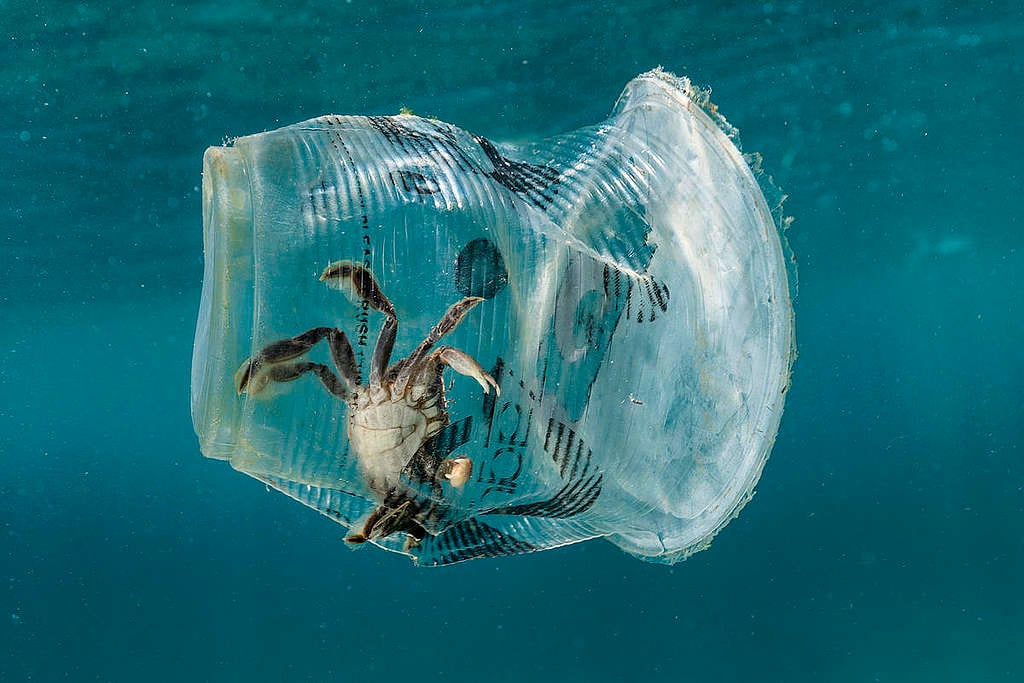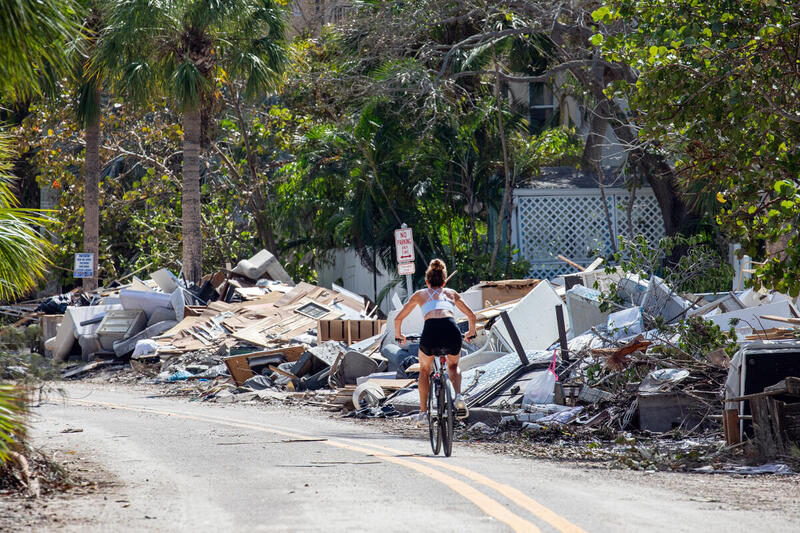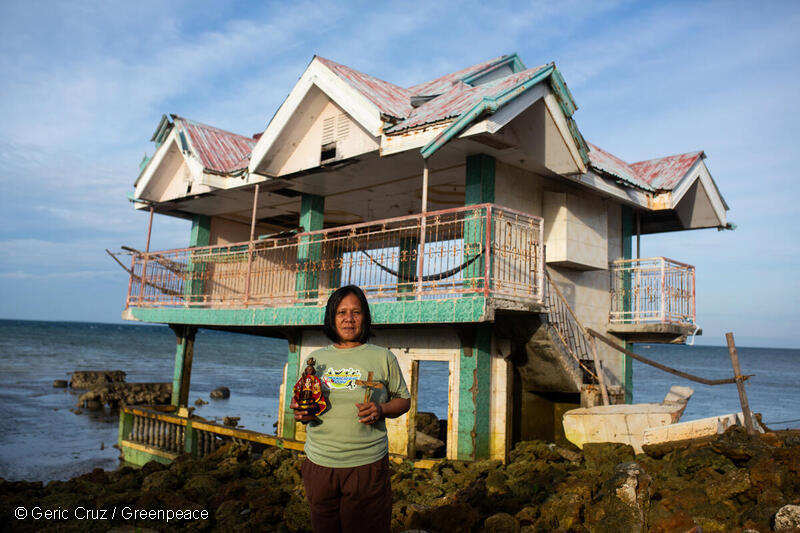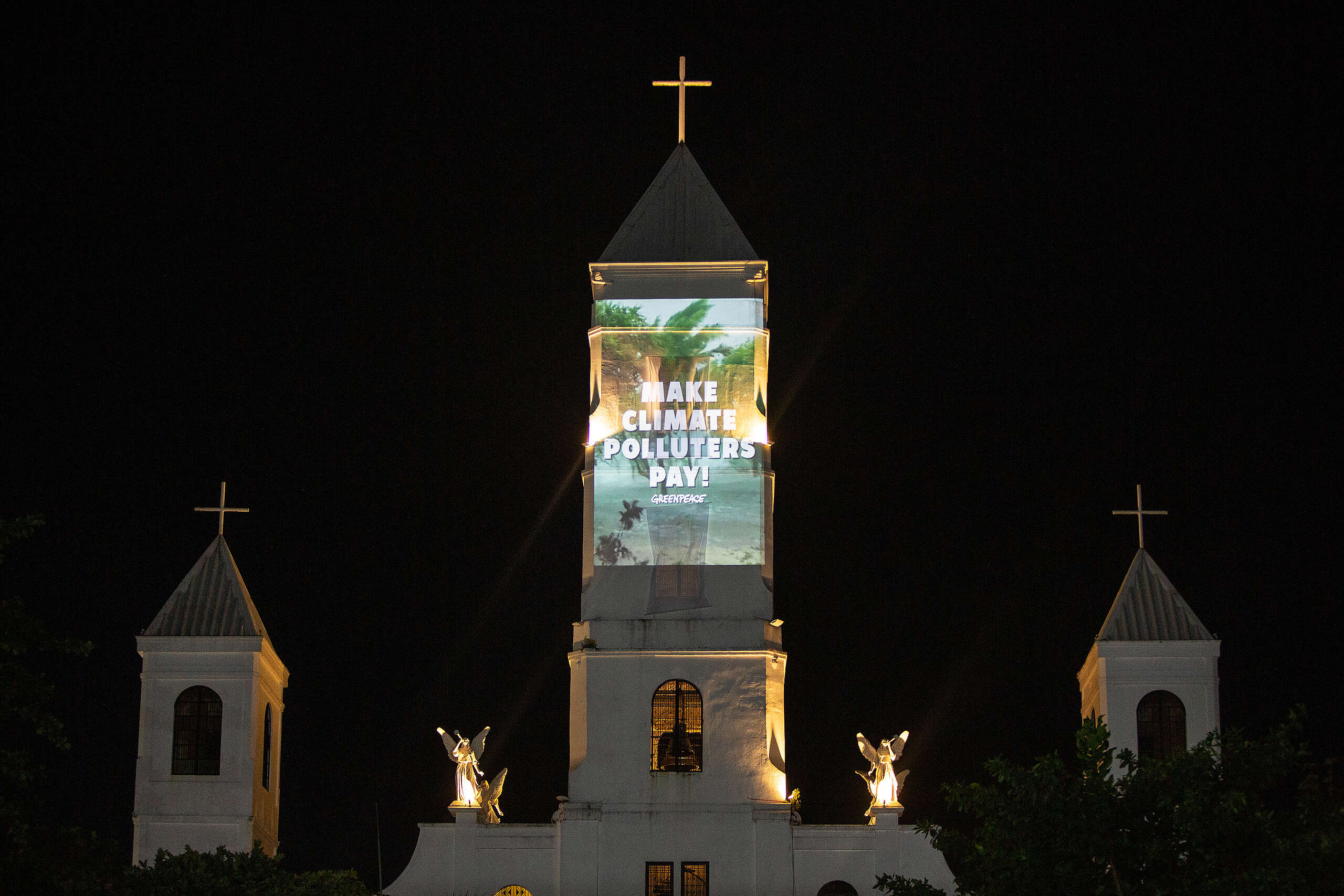Manila, Philippines—Parents and teachers now have a new tool to educate children on the harrowing impacts of plastic pollution as Greenpeace Philippines, in partnership with Adarna House, launched a new children’s book titled “Bayan ng Basura.” The picturebook is designed to make children understand how endless production of single-use packaging threatens marine creatures and local communities.
Greenpeace Campaigner Virginia Benosa-Llorin said the book project is part of the organization’s efforts to include the story of plastics in school curricula, as well as enable parents to support movements against the plastic crisis in the country by first encouraging children to opt for reusables instead of single-use packaging.
“The Philippines generates nearly 200 million pieces of sachets and 48 million plastic bags on a daily basis [1], produced by corporations that refuse to end the throwaway culture despite the public clamor for sustainable reuse and refilling options. We are indeed in a plastic pollution crisis and we need all the support we can get to stop this from further harming our environment, our health, and the welfare of our communities. Through the children, we are calling on parents to help us in our campaign,” Llorin said in a storytelling session hosted by Philippine Daily Inquirer.
Bayan ng Basura, written by Palanca-winner Augie Rivera and illustrated by Jill Arteche, depicts the story of a sea turtle named “Pawikan” who was swept away by a storm in a darker and more polluted part of the ocean. On his journey home, Pawikan met sea creatures who are also tormented by the plastic situation, including a whale that has ingested shampoo sachets, an octopus entangled in a ropes, and a prawn living inside a plastic bottle.
Rivera said he drew inspiration from real-life cases of animals affected by environmental issues, including the story of a sea turtle washed away off the coast of Costa Rica with a plastic straw pierced through its nostril and a video of a British driver swimming through a “sea of plastics” in Bali, which went viral in 2018.
The book also offered solutions on how to end plastic pollution, which includes calling on companies to stop the relentless production of single-use plastics [2] and enabling local government units to implement stricter regulations on garbage disposal.
The book was first launched in a story-telling session for children in Kapitagan in Pasig, in partnership with San Lorenzo Ruiz Senior High School. It is now being used by Greenpeace for local campaigns [3].
Notes to editors:
[1] A report published by Global Alliance for Incinerator Alternatives showed the Philippines produces around 59.7 billion pieces of sachets annually. Read more: https://www.no-burn.org/wp-content/uploads/Plastics-Exposed-2nd-Edition-Online-Version.pdf
[2] Coca Cola, Nestle, and PepsiCo are named top producers of plastic wastes for three years in a row. These also offered mostly false solutions to the plastic crisis. Read more: https://storage.googleapis.com/planet4-international-stateless/2019/09/8a1d1791-falsesolutions2019.pdf
[3] The book is also available for sale at Adarna House.
[4] Photos available here
Media contact:
Angeli Cantillana
Communications Campaigner, Greenpeace Philippines
[email protected] / +639985959733
Virginia Benosa-Llorin
Campaigner, Greenpeace Philippines
[email protected] / +639985826617

Our coastlines are among the most impacted by plastic pollution in the world. Be part of the solutions!
TAKE ACTION


